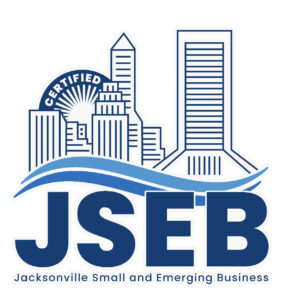We take telecommunications for granted in our modern world – smartphones, internet, and video calls – everything is standard to us. This was not always the case and just a few decades ago, none of this was widespread or even public.
It has all come down from centuries of hard work, discoveries, inventions and commercialization. Let’s take a dive into the past as we learn the brief history of telecommunications.
Brief History of Telecommunications
Earliest Telephone
Robert Hooke created the first acoustic telephone in 1672 when he discovered that he could transmit sound over a string or wire attached to an earpiece or mouthpiece. He was not fully aware of his discovery, as his notes suggest he wanted to use the device to create music.
1800s
In 1838, Samuel B. Morse and his buddies, Leonard Gale and Alfred Vail, discovered the electric telegraph when they were exploring the idea of a recorded telegraph for long distance communications.
They found that by connecting 2 telegraphs and running electricity through a wire, they could communicate by holding or releasing the buttons in a series of intervals. This became known as the Morse code since, and it lay the groundwork for modern day land-line telephones.
- The First Telephone
By the 1870s, telegraphs had established themselves in the world and they were used as the primary way of communication for the world’s commerce sectors. William Orton, the president of Western Union, had what could be considered a monopoly in the U.S. on the telegraph.
This prompted many inventors to experiment in an attempt to create competition, while some wanted to improve Western Union and William Orton’s position on his monopoly. Around this time, inventor Alexander Graham Bell was funded by Gardiner Greene Hubbard, an attorney and Bell’s father-in-law, to improve telegraph lines.
Hubbard wanted to break the monopoly but could never have possibly imagined how significant and groundbreaking Bell’s new invention would prove to be. Bell worked on harmonics along with Thomas Watson, an electrician, to deliver multiple telegraph messages through a single line.
In 1876, Bell was the first to develop and patent a telephone-like device that was commercially viable. There were many competitors who patented similar devices later, most notable of which was by Elisha Gray, who applied for a caveat for his device later on the same day as Bell.
- Photophone & Radio Transmission
By august of 1877, inventor Thomas Edison, who had been working on sound transmissions, improved on Bell’s work and created the first acoustic phonograph. He could successfully record sounds and play them back.
Meanwhile, Alexander Graham Bell was working on improving his invention as well. He had set up a lab from the money he made off the telephone and used it to create the photophone in 1880. It was a device that could transmit sound via a beam of light – he had basically made the first wireless call ever.
In 1893, Nikola Tesla patented the first transmitter that could wirelessly transmit radio waves. Inventor Guglielmo Marconi alleged Tesla stole his invention but lost in court. Luckily, this did not deter Marconi and he continued his work on wireless sound transmission to develop the first ever radio in 1896.
1900s
Decades passed before Bell again made history by being the first person to make a transcontinental telephone call in early 1915. The coast-to-coast call was to his assistant and it made making long distance calls a reality.
By January 1927, the first radio-telephone service was established from the U.K. to the U.S., taking global telecommunication to new heights. This was achieved by using the very first transatlantic telephone cable connecting the two nations.
- Television & Video Calls
In a world dominated by telegraphs, telephones and radios, Phillip T. Farnsworth changed the game and made history in September 1927, when he invented the first prototype of a television set. He had been working on transmitting images and discovered he could do it by encoding radio waves with an image and then transmitting and projecting it on to a screen.
By this time AT&T, which evolved from The American Bell Telephone Company, was well established and combined the telephone and television to create the first experimental videophone in 1930. This two-way audio-visual telephone could let people talk and see each other in real time.
It was the first video phone but it never became a commercial success. AT&T would go on to become the company that contributed (and perhaps hindered), the most to commercial telecommunication in the 20th century and beyond.
In 1934, the first commercial radio-telephone service was established across the Pacific Ocean between the U.S. and Japan. In March 1936, the first public videophone network was installed in Nazi Germany for “Aryans only”.
- Mobile & Space
By June 1946, Southwestern Bell made the first mobile telephone call from an automobile and the service was a limited capacity mobile network due to its high cost of installation. Ten years later in 1956, the first 36-circuit transatlantic telephone cable was installed from Newfoundland to Scotland.
This brought the cost of public calling down from the previous radio telephones. In 1962 telecommunications were allowed to go to space owing to The Communications Satellite Act. AT&T would go on to put six telecommunications satellites into orbit in just 2 years.
In 1964 a paper was published by Charles Kao and George Hockham that proved fiber-optic communication could be possible, bringing new developments to Bell’s historic photophone.
- Internet & Modern Mobiles
In October 1969, Charley Kline and Bill Duvall transmitted data between nodes of the ARPANET, a forerunner of the internet, marking the first computer network. In 1973, Inventor Martin Cooper made the first mobile phone, with a talk time of under 30 minutes and it took forever to recharge its battery.
Cooper made the first cellular mobile call to his rival Joel Engel at Bell Labs. His phone was the precursor and prototype for the very first commercial mobile phones made by Motorola, his employer. Japan later launched the first commercial mobile phone network in 1981, initially in Tokyo and later expanded.
At the same time, Norway, Sweden, Finland and Denmark established their mobile networks through the Nordic Mobile Telephone System. During this time, the Internet was limited to the military, some corporate uses and university research facilities.
In 1982 the first electronic mail was delivered over the internet when Jonathan Postel wrote the Simple Mail Transfer Protocol. Later on the first of January, 1983, ARPANET turned in to the internet and it became open for standard use.
In 1998 the company, Iridium, put 64 satellites in orbit and produced the first hand-held satellite phones, revolutionizing mobile telecommunication. This would later lead to the development of modern-day smart phones we are so used to.
2000s
In 2003, internet protocols allowed for computers to transmit phone calls. This was a breakthrough for telecommunications because it meant long distance communication could use established computer networks and did not need to cost anything.
This transmission is what we know today as VoIP, or IP telephony. Here on out, the decades built on these great innovations and today, we have everything that we could possibly imagine for local and global telecommunications.
We still build upon our existing technologies because progress is important, and it takes us to the next level. We have things like 5G, big data and Artificial Intelligence transforming the current world of telecommunication, all thanks to its rich and fruitful history.
Communications Solutions, Inc. has been the premier provider of telephony systems and support in Northeast Florida for 20+ years. We specialize in Avaya IP Office and can customize it to fit your business needs. If you want to get more familiar with what Avaya IP Office can do for you, Contact Us Today!



